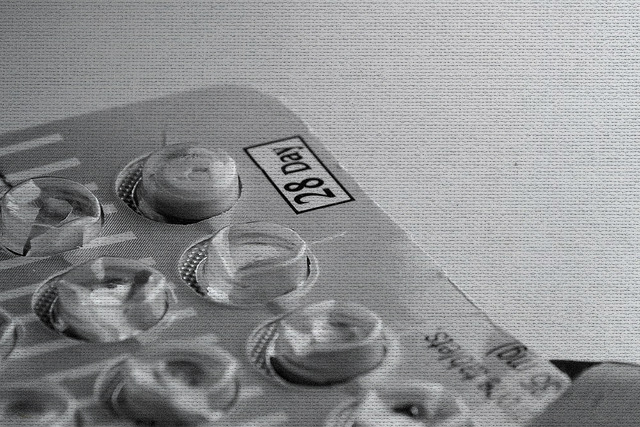Here’s a notion: Birth control pills are not the only way manage your reproductive health.
The pill came out more than 50 years ago, and at the time, it was a symbol of liberation and freedom for women. Suddenly, they no longer had to worry about unplanned pregnancy. It was great. But now that 50-year-old technology is starting to lose much of the appeal it once had.
Today many women get on the pill as teenagers to “regulate” irregular cycles, and they get off the pill in their late 20s or early 30s when they want to get pregnant. The unfortunate reality is many women find it’s not as easy as they thought it would be to get pregnant. Ten or fifteen years of being on oral contraceptives doesn’t “fix” an irregular cycle; it just kind of pushes the pause button on your reproductive system.
When you come off the pill in your late 20s or early 30s because you finally want kids, your body has to pick up where it left off when you were a teenager. Often women at this stage of their lives find it takes longer than expected to conceive and wind up on the assisted reproductive technology track — reproductive endocrinologists, expensive and annoying tests, procedures, hormone injections ,and all that jazz. And, heartbreakingly, after several years and thousands of dollars, that doesn’t always work.
The side effects of the pill are a real pain in the ass for many women, too. Weight gain, depression, loss of libido, and “not feeling like myself” (AKA “I seem to have gone insane”) are some of the more common complaints cited. In fact, a CDC report on contraceptive use states that 10.3 million women have stopped taking the pill due to side effects, or fear of side effects.
All women need a way to have children when they want them, and to not have children when they don’t. And they need to feel good about the whole thing — not freaked out, bloated and crazy. Imagine how the world would be different if this was a reality.
This reality is possible thanks to the wonderful simplicity of the Fertility Awareness Method — the technology behind Kindara. Instead of women’s reproductive reality being like this: “Oh my god, I don’t want to get pregnant” during her twenties, followed by “Oh my god, I want to get pregnant NOW!” in her thirties, the Symptothermal Method makes it one question: “When do I want to get pregnant?”
Charting your cycle using the Fertility Awareness Method can help you achieve your reproductive goals without pills, side effects, or stress, whether you want to have kids in the next few years, in 10 years, or never. By charting your cycle, you will see if and when you are ovulating, and you will know when you are fertile, which is the trick to knowing when you can or cannot pregnant. Charting your cycle could help clarify issues that need to be remedied before you can get pregnant too. You can even confirm pregnancy with your chart. Exciting!
If women were taught the basics of Fertility Awareness as soon as they entered their reproductive years and knew that they could avoid or plan for pregnancy by charting their primary fertility signs (temperature and cervical fluid), they would save a lot of time, money, and stress.
What a different world we would all be living in if each woman shifted her thinking from “I need this pill so I don’t have unplanned pregnancies, and I need my doctor to prescribe this pill” to “I know just what is going on with my cycle at all times. I am calm, confident, and empowered. I manage my own fertility thank you very much, and I don’t need pills to do it.”
Now I’m not saying that oral contraceptives have no place in the world. They are a wonderful invention. Thanks to the pill, women today can take it as fact that pregnancy can be prevented easily and effectively. But because this is now a forgone conclusion, we are free to look for even better options — options like the Fertility Awareness Method that can prevent pregnancy easily, effectively, autonomously and without side effects.
Originally published at Kindara.com on December 15th, 2012



Bravo! Thank you for writing this piece. This is exactly the awareness that needs to take place. What a different world this would be indeed. Women would be so empowered by understanding their fertility. This has been the missing link in our ‘fight for equality.’
I certainly support the idea of women owning and knowing our own cycles. I call it body literacy – knowing how to observe, chart and interpret our menstrual cycle events in order to make decisions about our fertility, sexuality, and general health and well-being. I agree that the sooner we learn how to do this, the better.
I’d add that knowing and understanding our cycles goes far beyond fertility and being able to get pregnant when we want to. Regular cycles and consistent ovulation support women’s breast, bone and heart health both during our reproductive years and beyond. Knowing that we ovulate is important. What often happens is that once women have had their children, they consider their cycles irrelevant and stop paying attention to them. Instead we should do everything we can to support healthy, ovulatory cycles for as long as possible. So fertility awareness charting apps have application beyond managing fertility.
So true Laura! 🙂
Leslie,
Yes, I agree! I think fertility charting has the power to change the world. (Really!) When all women have the knowledge and tools they need to effectively manage their reproductive health naturally, it’s going to be a whole different ballgame!